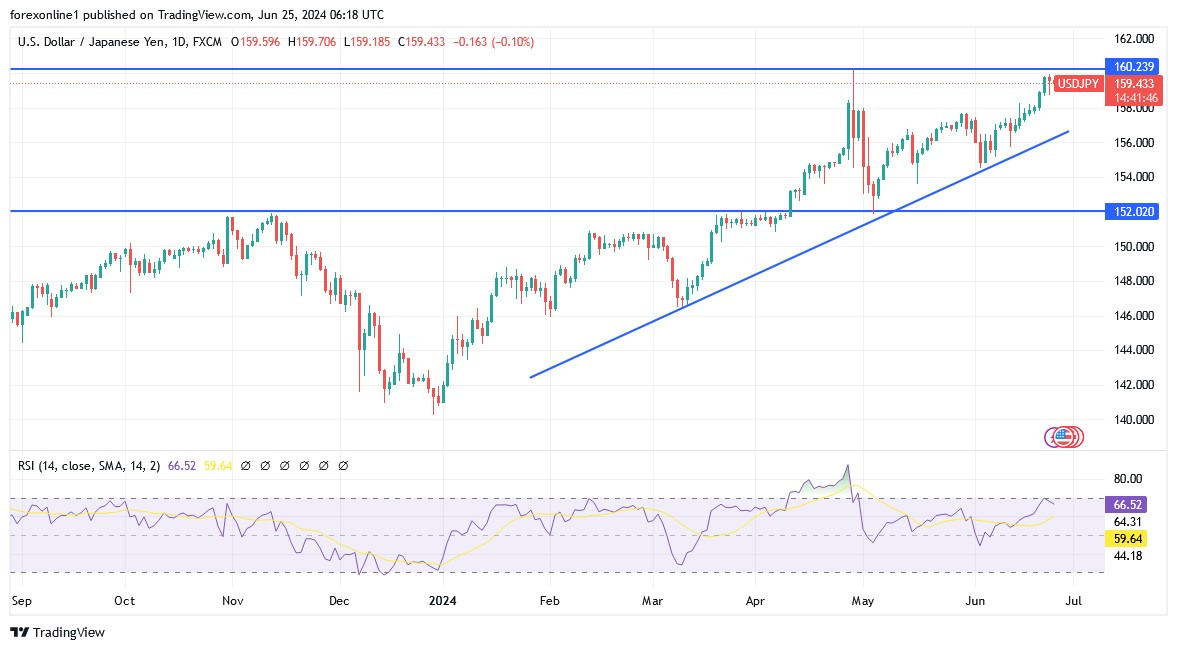- As trading began this week, the value of the Japanese yen fell to around 160 yen per US dollar, approaching its 34-year low of 160.24 yen set on April 29.
- Bank of Japan officials remained divided on how to proceed with raising interest rates.
- In this regard, the Bank of Japan's summary of opinions from the June meeting showed that members acknowledged the negative impact of rising living costs on consumption, but were hesitant about the timing of policy normalization.
One member called for early action due to the upside risks to inflation, while others urged caution and needed further confirmation from upcoming data. Overall, the developments came as the Bank of Japan declined to scale back its massive bond purchases in last week’s policy decision, saying it would release a plan to reduce its bond-buying program at its next policy meeting in July.
Overall, investors are now looking ahead to more economic reports this week including retail sales, industrial production and unemployment data for May, as well as Tokyo inflation figures for June.
Recently, the Japanese yen tried to recover some of its losses due to recent comments from the country’s top currency official, warning that the government is ready to intervene in the forex markets 24 hours a day if necessary. Vice Finance Minister Masato Kanda said, “If there is excessive volatility in the currency, it will have a negative impact on the national economy,”. Added, “In the event of excessive movements based on speculation, we are ready to take appropriate action.”
Top Forex Brokers
Market watchers warn that the Japanese yen is vulnerable to further declines without appropriate intervention. Moreover, the fact is that the divergence between benchmark interest rates in the US and Japan is wide and is unlikely to change in the future. Recently, it was confirmed that Japan spent over $61 billion intervening in currency markets between April 26 and May 29. Although the Bank of Japan did not provide specific dates, trading patterns have indicated multiple rounds of intervention, such as selling US Treasuries.
While Japan may appear ready to unleash more weapons, experts believe any action will be muted. “This certainly does not look like an intervention. However, it does indicate how nervous the market is about the possibility of intervention,” Michael Brown, chief research strategist at Pepperstone, told CNBC. “I think as long as any further weakness is not rapid or disorderly in nature, it is unlikely that the Ministry of Finance will intervene now.”
On the economic data front, there will be some awaited reports from the US and Japan. In the world’s largest economy, there will be crucial inflation data and a final estimate of first-quarter GDP.
USD/JPY Technical analysis and Expectations Today
The general trend for the USD/JPY pair will remain bullish until the US inflation reading is released at the end of the week or there is an expected intervention from Japan in the currency markets to stop the Japanese currency from further collapsing, which is hurting the economy. Currently, according to the USD/JPY forecast on the daily chart, there will be sensitivity to the Dollar/Yen price breaching the psychological resistance level of 160.00, which will move all technical indicators towards strong overbought levels, and with it, talk of an imminent Japanese intervention will increase.
Ready to trade our daily forex forecast? Here are the best forex brokers in Japan to choose from.

